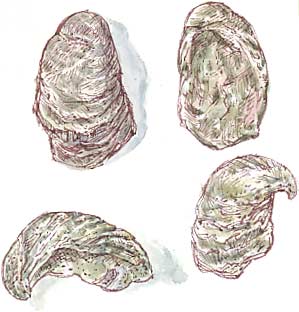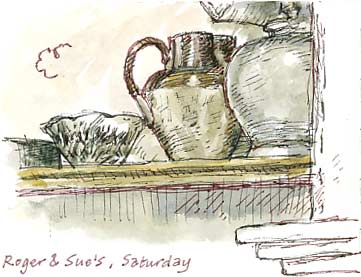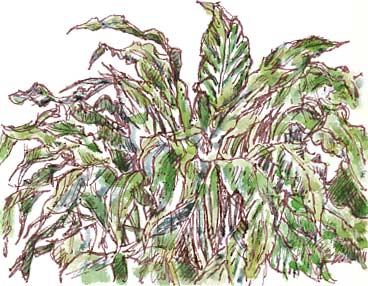
Richard Bell's Wild West Yorkshire Nature Diary, Saturday, 31 July 2010

 YOU
SOMETIMES see more when you're out with friends. This morning we were with
Roger and Sue, checking out the Melbourne House walk ready for a reprint
of Walks in the Rhubarb Triangle, when Roger stopped to take a closer
look at the gravel laid down in front of an electricity substation.
YOU
SOMETIMES see more when you're out with friends. This morning we were with
Roger and Sue, checking out the Melbourne House walk ready for a reprint
of Walks in the Rhubarb Triangle, when Roger stopped to take a closer
look at the gravel laid down in front of an electricity substation.
Around Wakefield you'd expect this to be crushed magnesian limestone aggregate from the outcrop to the east or gravel from quarries in the river deposits in the Aire and Calder valleys, which would consist mainly of sandstone pebbles. This was distinctly different. It looked more like the assortment of rock types that you might find on a shingle bank at the coast. You'd never find so many flints in the rocks around Wakefield. Rounded pebbles are dotted around amongst predominantly more angular fragments. There are a few darker grey pebbles that I would guess are Carboniferous limestone from the Pennines or Jurassic limestone from the Yorkshire coast.
It wasn't long before we found a fossil shell; this Gryphaea, a relative of the oyster, is perhaps 150 million years old, from Jurassic seas. You'd never find it locally because our bedrock is far older than the Jurassic. We soon found another four of them, plus what appeared to be a belemnite; the cuttlefish-like inner skeleton of a prehistorice squid-like creature.
You can count the growth rings on this shell; the mollusc must have been at least four years old when its shell was deposited in the limy mud of the sea floor. You can see why people called these fossils 'Devil's Toenails'.
This is the left valve of the shell; the right was like a flattish lid to the living chamber.
In its time this creature might have seen plesiosaurs and ichthyosaurs swimming by, or even the occasional carcass of a sauropod dinosaur drifting out to sea from some lushly forested river delta.

 Back
at Roger and Sue's for lunch, I drew their peace lily and the jug on the shelf.
Back
at Roger and Sue's for lunch, I drew their peace lily and the jug on the shelf.